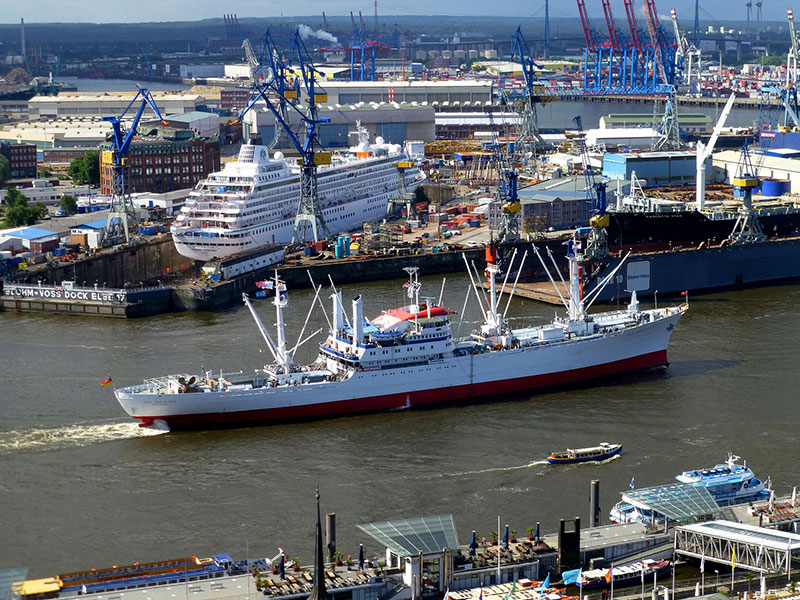GHG Emission Reduction in European Maritime Transport
13.33
From 2014 to 2015
This research analysed the dynamics of greenhouse gas emissions in the maritime sector and proposed reduction scenarios, including the inclusion of maritime transport in the EU ETS system. TML calculated marginal abatement costs and developed abatement cost curves for various shipping segments, with scenarios showing up to 30% CO2 reductions by 2030.
A reduction in greenhouse gas emissions is a key goal of the EU 2020 Strategy and the White Paper on Transport.
This study provides insight into the development and dynamics of greenhouse gas emissions in the maritime sector, as part of the European Commission's targets. We provide an overview of measures that can be taken, both within and outside the sector, to reduce greenhouse gas emissions. This includes various consequence scenarios, such as, for example, bringing maritime transport under the EU ETS system. We calculated the costs and savings of these measures on the sector and the potential impact on other sectors and the global economy.
The overall objective of the project was to calculate the marginal abatement cost of greenhouse gas emissions in the maritime sector and its no-regret abatement potential up to 2030. Specific objectives were the following:
This resulted in the development of a reference scenario and CO2 reduction scenarios for shipping worldwide and within the EU from 2012 to 2030. The reference scenario also includes analysis of transport volume, economic growth (4.25% globally and 1.55% for Europe - annually), and development of ship specifications (growth of average ship size and implementation of EEDI and LNG as fuel). The reduction scenarios are based on the CO2 Marginal Reduction Cost Curves for ten individual ship categories.
Under the reference scenario, annual CO2 emissions from shipping in the EU would increase from 190 million tonnes in 2012 to around 208 million in 2030. The reduction scenarios would result in CO2 reductions between 15% and 30% in 2030 compared to the 2030 reference scenario, and 7% to 18% reductions compared to the 2012 reference. In most cases, these emission reductions also result in savings in Total Cost of Ownership (TCO - sum of investment and operational costs).
A reduction in greenhouse gas emissions is a key goal of the EU 2020 Strategy and the White Paper on Transport.
This study provides insight into the development and dynamics of greenhouse gas emissions in the maritime sector, as part of the European Commission's targets. We provide an overview of measures that can be taken, both within and outside the sector, to reduce greenhouse gas emissions. This includes various consequence scenarios, such as, for example, bringing maritime transport under the EU ETS system. We calculated the costs and savings of these measures on the sector and the potential impact on other sectors and the global economy.
The overall objective of the project was to calculate the marginal abatement cost of greenhouse gas emissions in the maritime sector and its no-regret abatement potential up to 2030. Specific objectives were the following:
- The realisation of abatement cost curves for a number of shipping segments, for EEA segments between ports within the EEA and for total EEA-related maritime transport. This includes design and technical abatement measures as well as operational measures.
- Determining the potential emission reductions when maritime transport is included in the ETS, in various scenario variants.
- Determining the impact of maritime participation on the price level of EU emission allowances.
- Conducting a thorough sensitivity analysis on a number of relevant factors, including GDP growth, geographical distribution, fuel type, and improvements in the design of existing and new ships and their operational energy efficiency.
This resulted in the development of a reference scenario and CO2 reduction scenarios for shipping worldwide and within the EU from 2012 to 2030. The reference scenario also includes analysis of transport volume, economic growth (4.25% globally and 1.55% for Europe - annually), and development of ship specifications (growth of average ship size and implementation of EEDI and LNG as fuel). The reduction scenarios are based on the CO2 Marginal Reduction Cost Curves for ten individual ship categories.
Under the reference scenario, annual CO2 emissions from shipping in the EU would increase from 190 million tonnes in 2012 to around 208 million in 2030. The reduction scenarios would result in CO2 reductions between 15% and 30% in 2030 compared to the 2030 reference scenario, and 7% to 18% reductions compared to the 2012 reference. In most cases, these emission reductions also result in savings in Total Cost of Ownership (TCO - sum of investment and operational costs).


